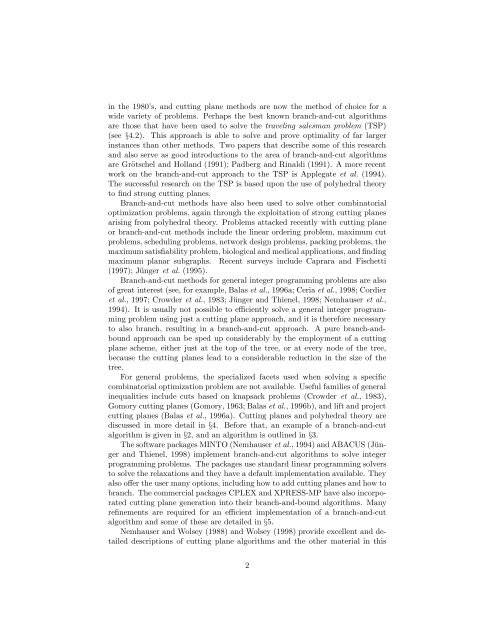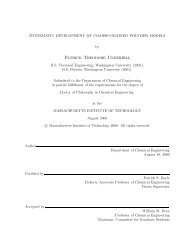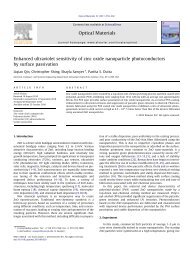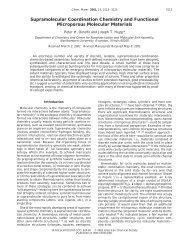Branch-and-Cut Algorithms for Combinatorial Optimization ...
Branch-and-Cut Algorithms for Combinatorial Optimization ...
Branch-and-Cut Algorithms for Combinatorial Optimization ...
You also want an ePaper? Increase the reach of your titles
YUMPU automatically turns print PDFs into web optimized ePapers that Google loves.
in the 1980’s, <strong>and</strong> cutting plane methods are now the method of choice <strong>for</strong> a<br />
wide variety of problems. Perhaps the best known branch-<strong>and</strong>-cut algorithms<br />
are those that have been used to solve the traveling salesman problem (TSP)<br />
(see §4.2). This approach is able to solve <strong>and</strong> prove optimality of far larger<br />
instances than other methods. Two papers that describe some of this research<br />
<strong>and</strong> also serve as good introductions to the area of branch-<strong>and</strong>-cut algorithms<br />
are Grötschel <strong>and</strong> Holl<strong>and</strong> (1991); Padberg <strong>and</strong> Rinaldi (1991). A more recent<br />
work on the branch-<strong>and</strong>-cut approach to the TSP is Applegate et al. (1994).<br />
The successful research on the TSP is based upon the use of polyhedral theory<br />
to find strong cutting planes.<br />
<strong>Branch</strong>-<strong>and</strong>-cut methods have also been used to solve other combinatorial<br />
optimization problems, again through the exploitation of strong cutting planes<br />
arising from polyhedral theory. Problems attacked recently with cutting plane<br />
or branch-<strong>and</strong>-cut methods include the linear ordering problem, maximum cut<br />
problems, scheduling problems, network design problems, packing problems, the<br />
maximum satisfiability problem, biological <strong>and</strong> medical applications, <strong>and</strong> finding<br />
maximum planar subgraphs. Recent surveys include Caprara <strong>and</strong> Fischetti<br />
(1997); Jünger et al. (1995).<br />
<strong>Branch</strong>-<strong>and</strong>-cut methods <strong>for</strong> general integer programming problems are also<br />
of great interest (see, <strong>for</strong> example, Balas et al., 1996a; Ceria et al., 1998; Cordier<br />
et al., 1997; Crowder et al., 1983; Jünger <strong>and</strong> Thienel, 1998; Nemhauser et al.,<br />
1994). It is usually not possible to efficiently solve a general integer programming<br />
problem using just a cutting plane approach, <strong>and</strong> it is there<strong>for</strong>e necessary<br />
to also branch, resulting in a branch-<strong>and</strong>-cut approach. A pure branch-<strong>and</strong>bound<br />
approach can be sped up considerably by the employment of a cutting<br />
plane scheme, either just at the top of the tree, or at every node of the tree,<br />
because the cutting planes lead to a considerable reduction in the size of the<br />
tree.<br />
For general problems, the specialized facets used when solving a specific<br />
combinatorial optimization problem are not available. Useful families of general<br />
inequalities include cuts based on knapsack problems (Crowder et al., 1983),<br />
Gomory cutting planes (Gomory, 1963; Balas et al., 1996b), <strong>and</strong> lift <strong>and</strong> project<br />
cutting planes (Balas et al., 1996a). <strong>Cut</strong>ting planes <strong>and</strong> polyhedral theory are<br />
discussed in more detail in §4. Be<strong>for</strong>e that, an example of a branch-<strong>and</strong>-cut<br />
algorithm is given in §2, <strong>and</strong> an algorithm is outlined in §3.<br />
The software packages MINTO (Nemhauser et al., 1994) <strong>and</strong> ABACUS (Jünger<br />
<strong>and</strong> Thienel, 1998) implement branch-<strong>and</strong>-cut algorithms to solve integer<br />
programming problems. The packages use st<strong>and</strong>ard linear programming solvers<br />
to solve the relaxations <strong>and</strong> they have a default implementation available. They<br />
also offer the user many options, including how to add cutting planes <strong>and</strong> how to<br />
branch. The commercial packages CPLEX <strong>and</strong> XPRESS-MP have also incorporated<br />
cutting plane generation into their branch-<strong>and</strong>-bound algorithms. Many<br />
refinements are required <strong>for</strong> an efficient implementation of a branch-<strong>and</strong>-cut<br />
algorithm <strong>and</strong> some of these are detailed in §5.<br />
Nemhauser <strong>and</strong> Wolsey (1988) <strong>and</strong> Wolsey (1998) provide excellent <strong>and</strong> detailed<br />
descriptions of cutting plane algorithms <strong>and</strong> the other material in this<br />
2







